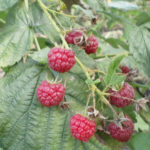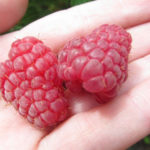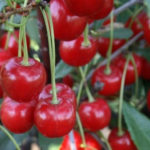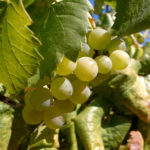Grape variety Anyuta
Over the past decades, the variety of table forms of grapes has been replenished with many new interesting varieties, bred by folk breeders on their own plots, but quickly spread among amateur winegrowers due to the excellent appearance and taste of the bunches.
A legendary man in this regard, Viktor Nikolaevich Krainov from Novocherkassk, at the end of the last century, took up a new business for himself - crossing and hybridization of various grape varieties, selection and reproduction of the best forms obtained. Viktor Nikolaevich became a kind of pioneer, inspiring many other people to follow his example. Thanks to his talent, the world saw absolutely masterpiece varieties of the sun berry, many of which professional breeders could also boast.
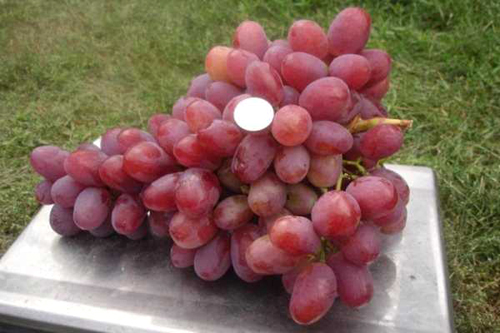
One of these promising forms, which in a short time gained well-deserved popularity, was the hybrid Anyuta, which, according to the author himself, became his favorite, for which she was named after his granddaughter. He noted the beauty of the new varieties themselves, the tenderness of the pulp and the mild flavor of nutmeg.
The variety was obtained as a result of crossing the pair of parental forms, beloved for the author - Mascot and Kishmish Radiant... From the same parents came the famous "Krainov troika" - grapes Transformation, Anniversary of Novocherkassk and Victor. But despite the common ancestors, Anyuta differs significantly from the twin brothers from the “three”. Even her ripening dates are later. In the circle of admirers, it is considered one of the best early autumn varieties.
For the excellent performance demonstrated during the state test, our heroine in 2016 was officially included in the State Register of Breeding Achievements of the Russian Federation and allowed for horticultural use. FGBNU "Federal Rostov Agrarian Scientific Center" is declared the originator. Co-authors, in addition to V.N.Krainov, are I.A.Kostrikin, L.P. Troshin, L.A. Maistrenko.

Agrobiological characteristics
Vigorous, fast-growing, early fruiting grape bushes. Anyuta's leaves are large, five-lobed, elongated, moderately dissected. The leaf blade is reticulate-wrinkled above, without pubescence below. The upper lateral notches are deep, open, with parallel sides and a rounded bottom; the lower ones are absent. The petiole notch is open, lyre-shaped, with a sharp bottom. The denticles along the edge of the leaf are large, triangular with a narrow base. The flowers of the variety are bisexual, they are distinguished by good fruit set even in adverse weather conditions.
The bunches are very large, with an average weight of 600-800 grams (maximum up to one and a half kilograms), cylindrical-conical or conical, loose. The combs and stems of the berries are long, firm, light green in color. Anyuta berries are oval or ovoid with a blunt end, large in size, up to 35 mm long and 27-29 mm in diameter, weighing about 15 grams or more. The pulp is tender, juicy, fleshy, harmoniously sweet in taste, has a distinct nutmeg aroma. Uncolored juice. The skin is of medium thickness, firm, edible, bright pink in color, covered with a light waxy coating on the outside. The number of seeds varies from 2 to 4, but due to the large berry, they are hardly noticeable. Tasting assessment of fresh grapes, according to the results of the state variety test, - 9.0 points. In conditions of excessive moisture in the soil during the ripening period, the berries may crack.
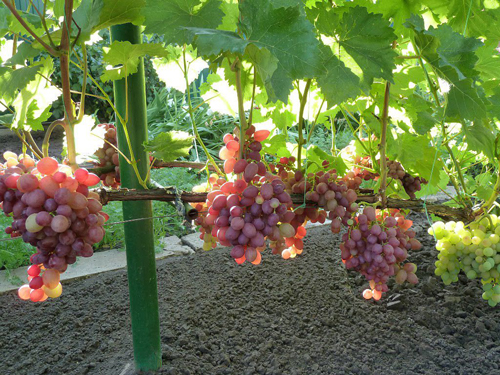
The crop is used for fresh consumption, has a high marketability and transportability. Bright, eye-pleasing colors and outstanding large-fruitedness perfectly attract the attention of buyers in the market. The yield of this variety is stored on average; in order to achieve long periods, it is recommended to use refrigerators with controlled humidity and temperature.
Anyuta ripens in the middle-late period. Vegetation from the moment the buds bloom to the ripening of the bunches lasts about 140 days.The required sum of active temperatures is 2800-2900 ° C. The grape yield is abundant - 188 kg / ha. From mature, powerful bushes, they often get 10 or more kilograms of large bunches. Good frost resistance, the vine can withstand temperatures down to -22 ° C. Shoots usually ripen well and along their entire length. Disease resistance is average. The fruitfulness of the shoots is high. The sugar content in the juice of berries at the time of ripening is 16.9 grams / 100 ml, of titrated acids - 6.6 grams / l. To taste, the ratio of acid and sugar is quite harmonious.
Agrotechnical features
If, in terms of aesthetic features and taste, Anyuta is among the favorites among varieties of a similar ripening period, then from the point of view of unpretentious cultivation and resistance to unfavorable factors, she is quite far from ideal. As an asset, it can be written down except that pickyness to soils, acceptable frost resistance, good rooting and survival of cuttings, rapid growth and entry into fruiting.
At the same time, grapes have low resistance to mildew and powdery mildew, which is why they require increased attention to themselves in years favorable for the spread of these diseases. Susceptible to phylloxera, because of which self-rooted seedlings may die in areas of soil contamination by this pest. To prevent such an outcome, it is necessary to graft the variety on phylloxera-resistant rootstocks in such places. Wasps damage the crop slightly due to the relatively strong skin of the berries, however, it is necessary to consider protection from birds that will not mind eating sweet grapes in autumn.
A sufficiently long growing season does not allow growing Anyuta in too northern regions, but even in the middle lane it is necessary to think about protecting the vine in winter. If there is even a risk of freezing of the bushes, it is better to play it safe and cover them for the winter. For this it is necessary to form the plants in a special way. Multi-arm fan forms, oblique cordons, or other bush management schemes suitable for covering culture are suitable. In the very south, you can cultivate the variety on a high trunk, but here, for safety reasons, you can form a lightweight lower tier, sheltered for the winter. It will allow you to quickly restore a grape bush in the event of the death of the uncovered part due to extreme frosts in winter.
Anyuta also needs careful rationing of the crop. If this is not done, there is a high probability of getting small, immature bunches of poor quality and taste. It is recommended to leave 35-40 eyes on the bush in the spring with 6-8 buds pruning fruit vines. With the beginning of the growing season, it is necessary to remove all weak and sterile shoots, and keep only one of the best bunches on the remaining ones. It is possible not to thin out the brushes, but only to pinch off the lower third of them.
Vigorous bushes of this variety require a significant area of nutrition, so they should not be over-thickened when planting. As a prophylaxis of fungal diseases, it is necessary to create conditions for airing the grape bushes. For the same purposes, the bunches of Anyuta during the ripening period must be clarified by removing the leaves around them. After the onset of removable maturity, you should not overexpose the crop on the bushes in order to prevent cracking of the berries in case of rainy weather. For this, it is necessary, if possible, to carry out irrigation, compensating for the lack of moisture in dry periods and smoothing out sharp fluctuations in soil moisture.
All this will help you get the highest quality harvest from Anyuta, experience true satisfaction from the results of your labor and appreciate all the potentialities that an outstanding breeder has laid in his brainchild.

